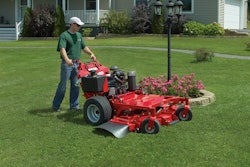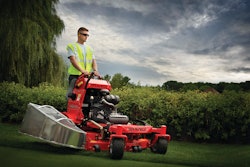I was at a dealership recently in New Jersey and one of the techs I was working with asked me if I thought the shop was the most important part of the dealership. I laughed and said that it is considered the most important to the person who has a piece of broken equipment, but it isn’t to the person who walks up to the parts counter needing a sparkplug, or to the individual who just brought their first home and wants to mow their grass.
Each department plays a role
Having been blessed with the opportunity to work with and in dealerships for many years, I have come to understand that success in a dealership is not dependent on doing one thing well; it is based upon doing all things exceptionally well. There is no one department that is more important than another department.
You can have the greatest service department in the world, but if you can’t get the parts you need because the parts department isn’t doing their job, then your shop is not going to perform. If you have a parts department that is at the top of their game but the service department is dysfunctional, then parts can’t grow at the rate they should. If you have both a service and parts department that shine above all of the competitors, but the dealership is weak at selling the wholegoods, then both parts and service struggle because they need equipment in the field in order to prosper and profit from repairs.
Finding a balance
Keeping balance in your dealership is absolutely critical to maintaining strong profits. Knowing your numbers is what helps you find that balance. In the service department you have to balance your labor rate with your warranty recovery rate and the cost of doing business in your particular part of the country. You need to recover at least 85% of the time you are paying your techs with the billable hours they produce. You also need to have your A-level technicians at more than 100% efficiency when measuring their wrench time versus their billable time.
In your parts department, balance comes from maintaining a strong “fill rate” (low 90%) from existing inventory along with strong average margins on OEM parts (outdoor power equipment only stores should have margins of 48 to 53%, and outdoor power equipment and compact tractor stores need margins of 42-45%). A good balance also comes from taking advantage of buying opportunities from manufacturers and making those returns at the end of each year to maintain a healthy parts inventory.
From the wholegoods side, balance for some means pruning lines down so that you have better control over your inventory, as well as holding margins in the high teens to mid-20s on consumer products and low to mid-teens on the commercial side. If you have heard me speak before, you know I preach the importance of creating negotiation packages that involve discounting annual maintenance rather than giving away cash. Your margins are better on service and parts than they are on dollar bills, so use parts and service as a way to hold your wholegoods margins up.
Margins matter
Keep in mind that even though your margins may be tighter on your wholegoods (say 15% instead of 50% like parts), there is a time and volume consideration that can’t be ignored. For example, if it takes you 40 minutes to sell a commercial landscaper $12,000 worth of equipment, while it’s true that you only made 15% on the sale, that 40 minutes generated you $1,800 of gross profit or about $45.00 per minute. To make that same gross profit in parts, with a 50% gross profit margin, it would require your parts department to sell $90.00 in parts per minute in the same 40-minute time period. Most parts departments struggle to look up, pull and check one customer out in 4 minutes, let alone sell $90.00 per minute. So while the margins are less, the profit relative to time and personnel is much greater on the wholegoods side compared to parts and service.
This isn’t to say that parts sales and margins aren’t important to the dealership’s overall success and profitability. While that one-time wholegoods sale brings in a lot of dollars, you will only sell so many wholegoods pieces of equipment in one year. But with that equipment out in the field, customers will come back to you again and again for those high-margin parts and the shop service to go with it.
A better life comes through balance and so does a better, stronger healthier dealership. The future looks very bright for those dealerships that are positioned to fill the vacuum’s and voids left by dealers who have given up. Now is the perfect time of the season to begin to reset and rebalance your dealership and to take advantage of the possibilities in service, parts and wholegoods you will be presented with over the next several months.




















